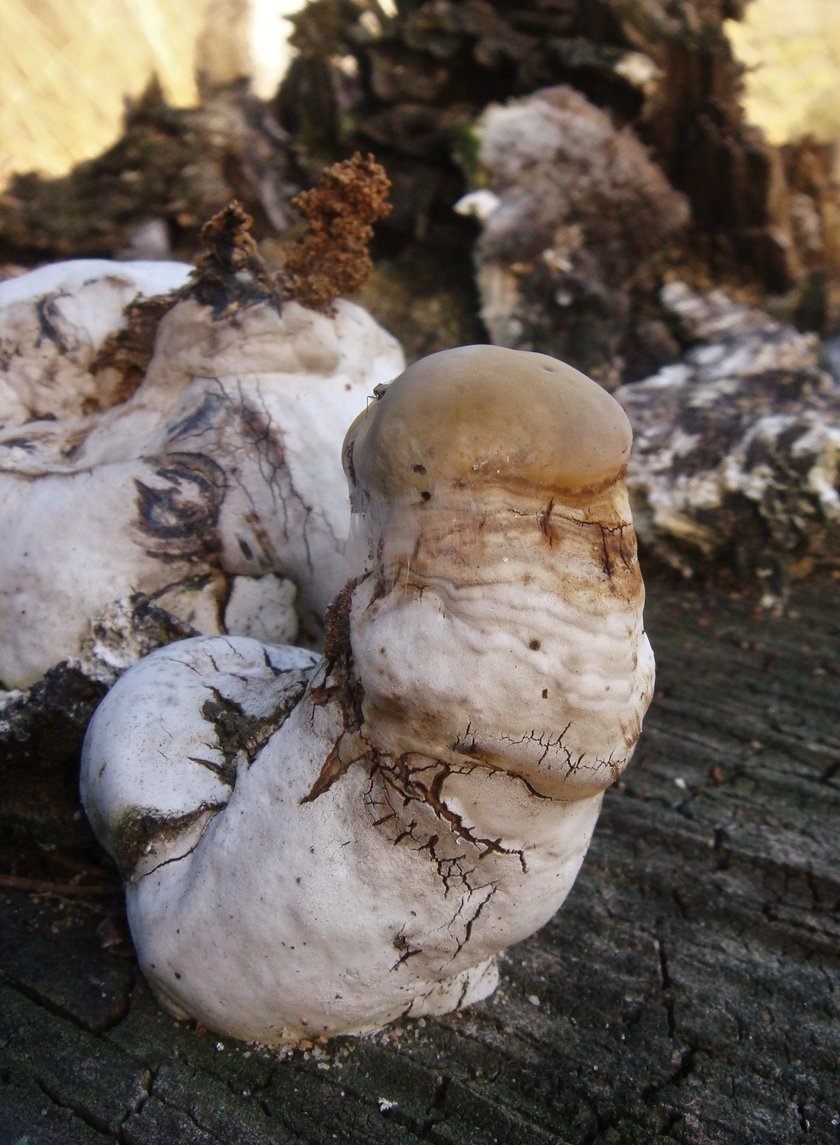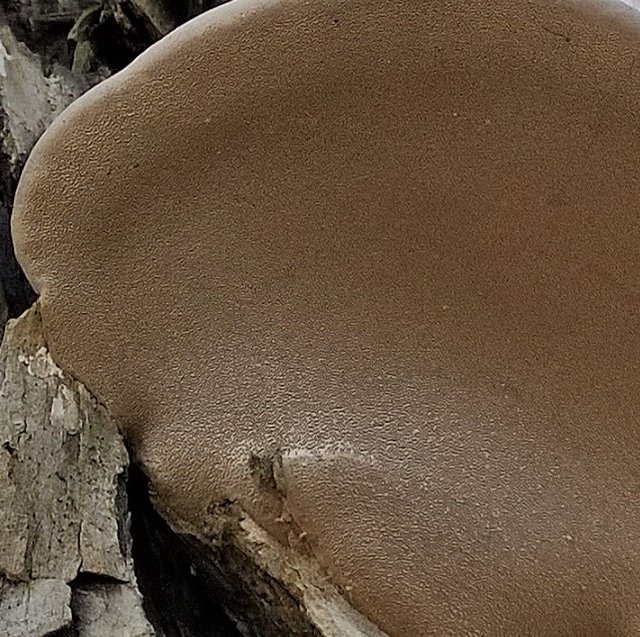Phellinus igniarius coll
- Division: Basidiomycota (Basidiomycetes)
- Subdivision: Agaricomycotina (Agaricomycetes)
- Class: Agaricomycetes (Agaricomycetes)
- Subclass: Incertae sedis (of uncertain position)
- Order: Hymenochaetales (Hymenochetes)
- Family: Hymenochaetaceae (Hymenochetes)
- Genus: Phellinus (Phellinus)
- Type: Phellinus igniarius
:
- Trutovik false
- Polyporites igniarius
- Fire mushroom
- Polyporus igniarius
- Fireman’s coals
- Placodes a fireman
- Ochroporus ignarius
- Mucronoporus igniarius
- Fire extinguisher
- Pyropolyporus igniarius
- Agaricus igniarius

fruit bodies perennial, sessile, quite diverse in shape and averaging 5 to 20 cm in diameter, although occasionally there are specimens up to 40 cm in diameter. The thickness of the fruit bodies varies from 2 to 12 cm, in some cases up to 20 cm. There are hoof-shaped variants (sometimes almost disc-shaped), cushion-shaped (especially in youth), almost spherical and slightly elongated. The shape of the fruiting bodies depends, among other things, on the quality of the substrate, because as it is depleted, the fruiting bodies become more hoof-shaped. When growing on a horizontal substrate (on the surface of a stump), young fruiting bodies can take on truly fantasy forms. They grow very tightly to the substrate, which is generally a hallmark of representatives of the genus Phellinus. They grow singly or in groups, and can share the same tree with other tinder fungi.

The surface is matte, uneven, with concentric ridges, in very young specimens, as it were, “suede” to the touch, subsequently naked. The edge is ridge-like, thick, rounded, especially in young specimens – but in old specimens, although it is quite clear, it is still smoothed, not sharp. The coloration is usually dark, gray-brown-black, often uneven, with a lighter edge (golden brown to whitish), although young specimens may be quite light, brownish or gray. With age, the surface darkens to black or almost black and cracks.
the cloth hard, heavy, woody (especially with age and when dry), rusty-brown in color, blackens under the influence of KOH. The smell is described as “pronounced mushroom”.

Hymenophore tubular, tubules 2-7 mm long end in rounded pores with a density of 4-6 pieces per mm. The color of the hymenophore changes depending on the season, which is a characteristic feature of all representatives of this species complex. Over the winter, it tends to fade to light ocher, grayish, or even whitish. In the spring, new tubule growth begins, and the color changes to rusty brown – starting from the central region – and by the beginning of summer the entire hymenophore will be a dull rusty brown.

spore print white.
Споры almost spherical, smooth, non-amyloid, 5.5-7 x 4.5-6 µm.
The mushroom is inedible due to its woody texture.
Representatives of the Phellinus igniarius complex are one of the most common polypores of the Phellinus genus. They settle on living and drying deciduous trees, they are also found on dead wood, fallen trees and stumps. They cause white rot, for which woodpeckers are very grateful, because it is easy to hollow out a hollow in the affected wood. Trees become infected through damaged bark and broken branches. Human activity does not bother them at all, they can be found not only in the forest, but also in the park and in the garden.

In a narrow sense, a species of Phellinus igniarius is considered to be a form that grows strictly on willows, while those growing on other substrates are distinguished into separate forms and species – for example, the blackish tinder fungus (Phellinus nigricans) growing on a birch.

However, there is no consensus on the subject of the species composition of this complex among mycologists, and since an exact definition can be very difficult, and it is impossible to focus only on the host tree, this article is devoted to the entire Phellinus igniarius species complex as a whole.









